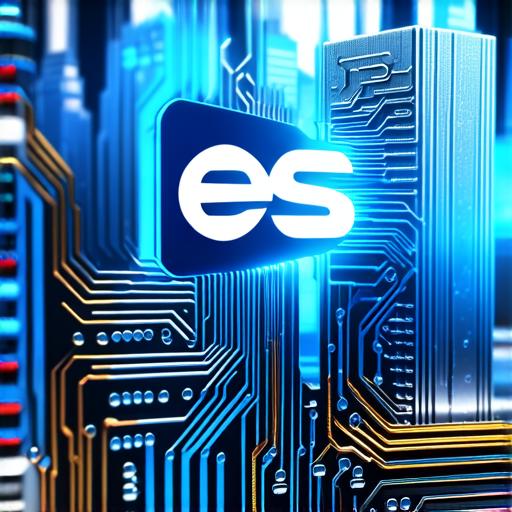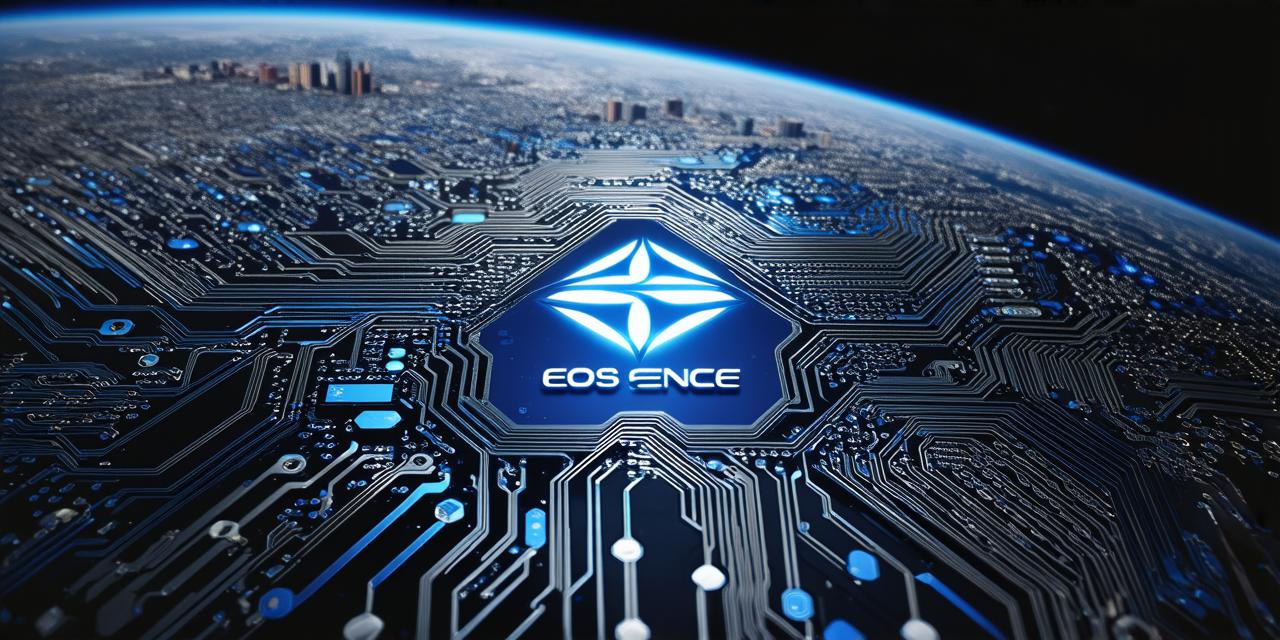If you are an avid follower of blockchain technology, you have probably heard about EOS (Ethereum Operating System). But what exactly is it and how does it work? In this article, we will explore the ins and outs of the EOS blockchain, including its unique features and benefits, as well as some real-life examples of companies that are already using it.
The EOS Blockchain: An Overview
The EOS blockchain is a decentralized platform designed to support the execution of dApps (decentralized applications). It was created by Dan Larimer, the founder and CEO of Block.one, and was launched in June 2018.
One of the main features that sets EOS apart from other blockchains is its speed. Transactions on the EOS blockchain can be processed in a matter of seconds, while transactions on other popular blockchains like Ethereum can take minutes or even hours to complete. This is due to EOS’s delegated proof-of-stake (DPoS) consensus algorithm, which allows for faster and more efficient transaction processing.
Another unique feature of the EOS blockchain is its ability to support large-scale dApps with millions of users. This is because EOS has a built-in scalability mechanism that allows it to handle high levels of traffic without sacrificing performance. In fact, EOS has been tested with over 50,000 transactions per second (TPS), making it one of the most scalable blockchains in existence.
The Benefits of the EOS Blockchain
Now that we have a better understanding of what the EOS blockchain is, let’s take a look at some of its key benefits.
Scalability
As mentioned earlier, one of the biggest advantages of the EOS blockchain is its scalability. With its ability to handle large numbers of transactions per second, EOS is well-suited for use cases that require high levels of throughput, such as financial services and gaming.
Speed
Another major benefit of the EOS blockchain is its speed. Transactions can be processed in a matter of seconds, making it an attractive option for applications that require fast transaction processing, such as e-commerce platforms and supply chain management systems.

Lower Fees
Compared to other popular blockchains like Ethereum, the EOS blockchain has much lower transaction fees. This is because EOS uses a delegated proof-of-stake consensus algorithm, which eliminates the need for expensive mining equipment and reduces the overall energy consumption of the network.
Smart Contract Compatibility
The EOS blockchain is fully compatible with smart contracts, making it an attractive option for developers looking to build decentralized applications. With its support for smart contracts, EOS enables developers to create self-executing agreements that can automate complex processes and eliminate the need for intermediaries.
DPoS Consensus Algorithm
The delegated proof-of-stake consensus algorithm used by EOS is designed to be more energy-efficient than other blockchain consensus algorithms, such as proof-of-work (PoW) and proof-of-stake (PoS). This makes EOS a more eco-friendly option for those concerned about the environmental impact of blockchain technology.
Real-Life Examples of Companies Using EOS
Now that we have discussed some of the key benefits of the EOS blockchain, let’s take a look at some real-life examples of companies that are already using it.
Deloitte
Deloitte, one of the world’s largest professional services firms, has partnered with Block.one to develop a number of projects on the EOS blockchain. One such project is the Orbis Dex, a decentralized exchange platform that enables users to trade cryptocurrencies without relying on intermediaries.
Ubisoft
Ubisoft, the world’s largest video game developer and publisher, has also partnered with Block.one to develop a number of projects on the EOS blockchain. One such project is Quartz, a platform that enables gamers to trade in-game items using smart contracts.
Bitfinex
Bitfinex, one of the world’s largest cryptocurrency exchanges, has also announced plans to launch its own stablecoin on the EOS blockchain. A stablecoin is a type of cryptocurrency that is pegged to a stable asset, such as the US dollar, in order to reduce price volatility.
How the EOS Blockchain Works
Now that we have seen some real-life examples of companies using the EOS blockchain, let’s take a closer look at how it works.
Consensus Algorithm
As mentioned earlier, the EOS blockchain uses a delegated proof-of-stake consensus algorithm. This means that instead of individual nodes validating transactions and adding them to the blockchain, a small number of elected “delegates” are responsible for this task. These delegates are chosen based on their reputation within the network, as well as the amount of cryptocurrency they hold.
Smart Contracts
The EOS blockchain is fully compatible with smart contracts, which are self-executing agreements that can automate complex processes and eliminate the need for intermediaries. With its support for smart contracts, EOS enables developers to build decentralized applications that can operate autonomously without relying on centralized authorities.
Dapps
DApps (decentralized applications) are built on top of the EOS blockchain and run using smart contracts. They can be used for a wide range of purposes, such as gaming, finance, and supply chain management. With its support for dApps, the EOS blockchain enables developers to create decentralized applications that can operate autonomously and securely.
Token Economy
The EOS blockchain has its own cryptocurrency called EOS (Ethereum Operating System). This token is used to pay for transaction fees and other network services, as well as to participate in the governance of the network. In addition to EOS, there are a number of other tokens that are built on top of the EOS blockchain, including those used by dApps and other decentralized applications.
Conclusion
In conclusion, the EOS blockchain is a highly scalable and efficient platform for building decentralized applications. With its support for smart contracts, dApps, and other network services, EOS enables developers to create decentralized applications that can operate autonomously and securely. While there are some key differences between EOS and its competitors, such as Ethereum, the EOS blockchain is a highly attractive option for those looking for a fast, efficient, and eco-friendly platform for building dApps and other decentralized applications.
